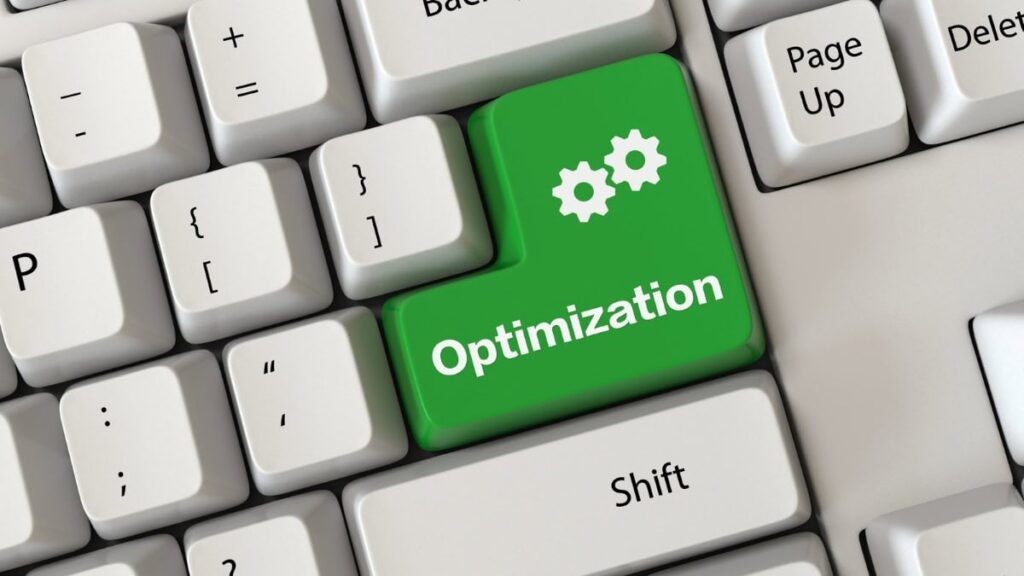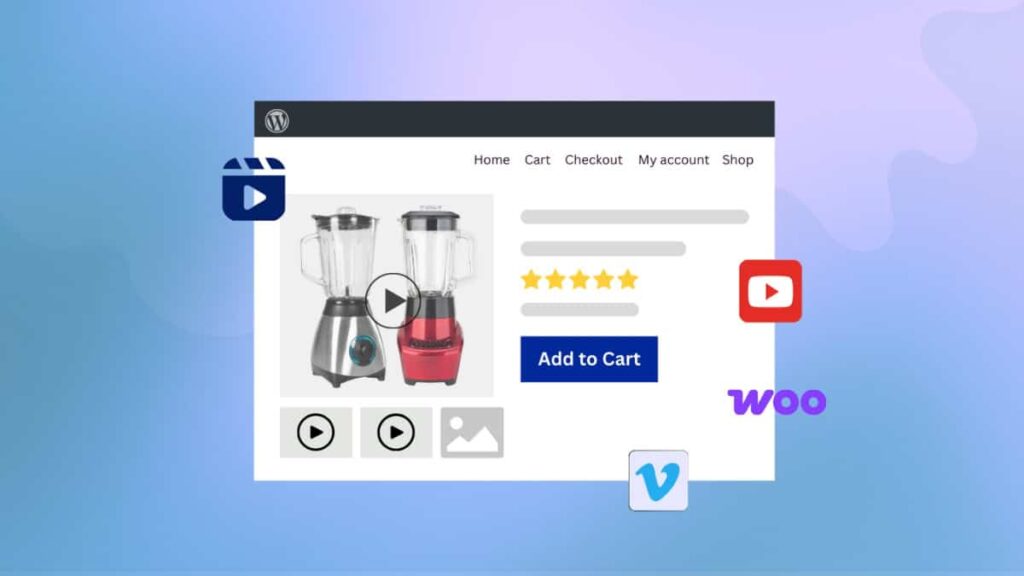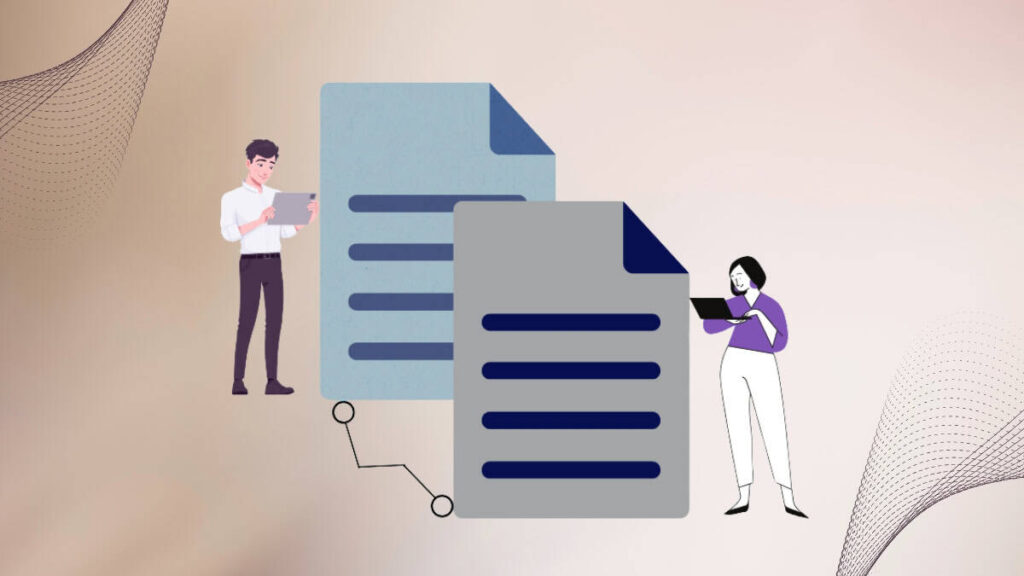Optimizing your website is a great way to increase performance and speed. The speed at which your website is loading is very important. Websites that take more than 3 seconds to load can lose up to 70% of their visitors. This means that with every millisecond, you can make or break your website traffic.
In order to fully understand how WordPress optimization works, let’s first take a look at how exactly a web page makes requests and why it takes so long for our browser to load them.
Key Takeaways
- Understand how WordPress websites load and what affects their speed.
- Learn the top reasons why your WordPress site may be running slowly.
- Discover tools like Google PageSpeed Insights, GTmetrix, and Pingdom to test your site speed.
- Explore 22 effective optimization tips, from image compression to caching and lazy loading.
- Get actionable tips that work for beginners and advanced WordPress users alike.
What Happens When a Webpage Loads?
A webpage request is a request to your browser to load all of the information on one page into your viewport so you can see it and interact with it. Each different piece of content on your page (whether it’s an image, CSS/JS file, HTML section, etc.) needs to be requested separately.
This is why it takes your browser such a long time to load more content or move between different pages of your website. It literally has to make hundreds and thousands of requests behind the scenes before any information actually starts loading on your page.
So, how can we decrease this time? Well, let’s take a look at some of the most popular ways to optimize your website and figure out which ones work best!
What makes a WordPress website Slow?
It is not just one thing that causes your website to be slow. There are many factors that could cause your site to be slower than it should be.
Every WordPress website has two types of performance issues: front-end and back-end. Front-end performance is usually related to the way you set up your content on the webpage. The back-end performance is related to the speed of the server, database, and hosting environment in general.
The main causes for slow Websites are web hosting, page size, poorly coded plugins, external scripts, and unoptimized website code, such as HTML Code, CSS Code, JavaScript Code, broken links, and missing files.
How Can You Test Your WordPress Site Speed?
Performance Testing is an excellent way to see how your website performs. It can be tricky, but don’t worry! There are some great tools that will help you measure the success of any page on its performance metrics with ease and accuracy.
Google PageSpeed Insights
The Google Pagespeed Insight Tool is a great tool to help you optimize your website. It will analyze your site’s content, code, and images to show you where your website could be improved.
After analyzing your website, it will give you an overall score out of 100. This score is based upon a variety of factors. These include the size of web pages, how quickly they load on mobile devices, whether or not you are using a caching plugin, and whether or not you use the latest web standards. It measures how quickly your website loads on a variety of devices, how efficiently you are using the web platform, and whether or not any major changes can be made to improve your score.
GTMetrix
GTMetrix is a page speed test tool that can be used to determine the performance of a webpage. The test is broken down into three categories: download time, compression, and execution time. These three categories are typically chosen when it comes to optimizing a webpage in order to make it load faster.
From the fastest to the slowest, download time is when the webpage opens up in a browser window or tab for the person viewing it. Compression refers to how much data has been taken out of the webpage to reduce the total amount of bytes that have been loaded onto a visitor’s computer. Execution time refers to how long it takes for certain computations and calculations on the webpage to be completed before displaying them on screen.
Pingdom
Pingdom is a powerful website speed test tool that can help you identify problems that might slow down your site. It also has two other core features that are worth knowing.
The first one is the uptime monitor, which alerts you when your site goes offline (and sends an email). The second core feature of Pingdom is the fact it’s able to show you live stats without refreshing the page. These live statistics allow you to see precisely how much traffic and load your site is experiencing in real-time and display them on a simple and user-friendly interface.
What Is Page Load Time and Why Is It Important?
Page load time is the amount of time it takes to fetch all the necessary resources for a webpage to display on an average device. The more time it takes to load, the more likely users are to leave. This can be fixed by using caching techniques like CDN (Content Delivery Network), Cache plugins, and optimizing your websites.
What is Website Optimization?
Optimization is usually about removing unnecessary files, clearing caches, and setting up your cache system for optimal performance. Files that are not needed should be deleted to make your site lighter. The problem with this approach is that it may cause the website to stop working completely if there are any conflicts with the files you delete.
There are two main optimization categories: server-side and client-side.
Server-side Optimizations
It includes things like serving static assets from a CDN (Content Delivery Network), reducing unnecessary network requests, and caching browser page data using cache plugins.
Client-side Optimizations
It includes website processes like AJAX (Asynchronous JavaScript) and DOM (Document Object Model). Minifying JavaScript and CSS will affect how fast the browser can read and execute code.
Why Should You Optimize Your WordPress Site?
The web is constantly changing, and we need to keep pace with those changes in order to stay relevant. It is often said that Google ranks websites with faster load times higher than sites with slower load times.
Some reasons why you should optimize your WordPress websites are:
Performance – As the number of pages on your website grows, so does the size of your database. This causes performance issues for your website, including slower load times and page rendering. Optimizing your website will help reduce these performance issues.
Search Engines – Google rewards fast-loading pages with higher rankings in search engine results pages (SERPs), since these users are often surfing for information quickly. The more optimized you’re able to make your site, the better it will perform in SERPs.
Users – Visitors care about how well a site performs, too! If they experience a slow site, they might take their search elsewhere. This is especially true if your competitor’s website loads faster than yours.
Since Google can tell the difference between a mobile and a desktop site. it is important to make sure your mobile site delivers the same level of performance as your desktop site. In fact, in two seconds, a user will leave if their web application isn’t responding well. This means that an optimized WordPress website is even more important for mobile devices. Website speed is equally important for both desktops and mobiles to rank on SERP(search engine result pages).
22 Proven Tips to Optimize Your WordPress Website
One of the most important factors in how fast your website loads is how it’s coded, but there are many additional ways you can ensure that your WordPress site is faster than ever before.
In order to increase your site’s performance, it’s important to look at all of the different ways you can optimize your WordPress website. Here, we will discuss 22 tips and tricks for your WordPress optimization. Let’s begin!
Enable Gzip Compression
Gzip tries to compress HTML, CSS, and JavaScript files that have been transferred over the web. The compressed file size will be less than the original file size, with a minimal loss of content. Additionally, when using Gzip, your site will load quicker because it takes less time for your browser to download the information from the server. WP Rocket lets you add GZIP compression rules.
Remove Render-Blocking
Many times, CSS and JavaScript are either blocking or slowing down the rendering of pages. These scripts are important for functionality on the website. But when they’re running at the same time as other scripts on an HTML file, it can cause issues with loading times. To fix this, make sure JavaScript & CSS are downloading asynchronously (i.e., they shouldn’t block the page) to speed up your website’s loading time.
Minify CSS, JS, and HTML
Minifying CSS, JS, and HTML is a good way to save bytes. This is because the browser only needs to download less data before it can render your site properly. This might be worth it, as it can increase the performance of your site.
There are plenty of plugins to minify code. Autoptimize is one of the best free plugins, and Fast Velocity Minify is another good option. CSS Compressor is a good option that simplifies CSS code for those who don’t want to add a plugin for this task.
Delete Unused Files, Plugins, Themes
Deleting unnecessary plugins and themes will free up disk space. Reduce the load on your server, and remove any security vulnerabilities that may be present in old versions of used plugins or themes.
You can delete unused files using a WordPress plugin such as WP-Sweep, or you can use FTP to delete those files directly from your server.
Cleanup Media Library
The media library is where all your files are stored on your website. Your WordPress site stores the original files and regenerated files. And this can lead to a cluttered media library over time.
We recommend using a plugin like the Media Cleaner – Clean & Optimize Space to get an overall cleaner library that works more efficiently, or you can also delete files manually that are no longer being used.
Cleanup Database
Another way to optimize your website is by optimizing the database. WordPress stores all of your posts, pages, links, images, etc., in one large relational database. Over time, this can lead to performance issues where WordPress may not be able to handle new posts or changes without slowing down or crashing.
To combat this issue, you can optimize the database with a plugin like WP-Optimize Cache, which will remove unnecessary data from your database and free up more space for WordPress to run smoothly.
Reduce Database Call
A lot of the themes out there are really poorly coded. They ignore WordPress code standards and end up making direct database calls or too many unnecessary requests to your server, which can slow down its performance by giving it more work than necessary!
Try to Fix HTTPS/SSL Errors without Plugins
The easiest way to fix this is by installing a plugin like Really Simple SSL, which you can also reduce this by manually fixing all URLs.
Optimize Images
The easiest way to optimize your website is to optimize your images. If you upload a lot of graphics and media to the internet, they may not be compressed and optimized. And your site can take a long time to load. One of the easiest ways of optimizing these files is to use an imaging program such as GIMP or Photoshop and compress or reduce the size of the image.
You can also use TinyPNG to compress your images online, while ImageOptim is the best tool for compressing images offline.
If you want to use a plugin to optimize images, we recommend you use Shortpixel, as it is a top-rated plugin on the WordPress repository.
Use Lazy Loading
When you have a lot of images on your site, you can use lazy loading to optimize your load time. Lazy loading loads images as they come into view. This will reduce the overall load time without sacrificing too much detail or quality. You can also use theBJ Lazy Load plugin.
Limits Comments Per Page
Too many comments can cause your blog to load slowly. In order to minimize this, you may want to limit the number of comments that show up per page on your blog by adjusting your settings.
In order to change this setting, go into the Settings menu in the Dashboard and then click on Reading. Underneath “Pagination”, there is a box where you can enter a number for “Comments per page”. The higher the number, the fewer comments will show up per page, but this will also affect how much content is shown. If you want all comments to appear per page, make sure to choose a value, “All”.
Reduce Redirects
Redirects can affect a website’s performance in a number of ways, and it is important to reduce their number. Redirects will consume bandwidth and can also take longer because they require two-page requests to load the same page. This means it is important that you minimize your redirects or eliminate them altogether when possible.
Reduce Post Revisions
If you are an avid WordPress user, you are likely aware of how revisions work on your site. Revisions are the edits of your posts that are made before they are ready to be published. If you have many revisions on your website, it can slow down the loading speed of your site.
Reduce post revisions by uploading posts as draft posts first before making changes and then publishing them, once you’re done editing.
Disable Pingback and Trackbacks
It is necessary to disable pingbacks and trackbacks. Pingbacks and trackbacks refer to comments that appear on your site that link back to the original source of the comment. These cause additional bandwidth use and slow down page load times.
Choose a Fast and Lightweight Theme
Make sure to choose a fast and lightweight theme. Many times, site visitors will be using older devices with limited processing power, so it’s important that your website doesn’t take too long to load.
Use CDN
A CDN(Content Delivery Network) is a service that stores static resources (images, JavaScript, CSS) on multiple servers in order to decrease load time. It lets the closest server handle requests for that resource. This avoids latency issues when sending information from one region of the world to another region.
We recommend Cloudflare, which can cache any of your images on its servers. You can also implement Google AMP into your pages to reduce the size of your web pages and provide accelerated mobile browsing for visitors to your website. Cloudflare can help optimize your website by providing protection from DDoS(Distributed Denial of Service) attacks. Makes it harder for hackers to identify patterns of site visitors who are visiting your site. And it also keeps all logs on their servers, so you don’t have to worry about them being leaked.
Use Updated PHP Version
Use the latest PHP version that is more optimized for websites. Choose a version that has been tested on WordPress to be sure you’re getting the best loading speed.
Use Updated WordPress, Plugins, and Themes
Use an updated version of WordPress to make sure you’re getting the most optimized features. Plugins and themes can also help with page load time. Avoid overusing plugins or overloading your site with heavy-looking themes.
Check out the Best WooCommerce Themes for your online store.
Enable Browser Caching
The other option to speed up your WordPress website is to enable browser caching. This will allow the files on your site to load from a server in the internet cloud, which can be faster than loading from your local hard drive. The downside of this is that it requires more bandwidth and processing power from your visitor’s computer. If you’re already running a CDN, then enabling browser caching will be a good way to improve their performance while decreasing server loads.
Use a Dedicated Server and Use Quality Hosting
If many visitors are accessing your website for longer periods of time, you should consider using a dedicated hosting server. it is important to use a good hosting company with respect to improving the speed of your website. Some of the most popular available services are Cloudways and Bluehost.
Use a Cache Plugin
One of the best ways to speed up your website is to implement caching. By caching, we’re essentially telling WordPress that we already have a copy of the data and don’t need the request right now. This will reduce the load on your server and result in faster loading. Some of the free caching plugins are available in WordPress. Read more about the 8 Best WordPress cache plugins in 2025.
Use DNS Level Firewall
A WordPress firewall helps you block brute force attacks, hacking attempts, and malware. Some of the plugins that do the job are Sucuri, Wordfence, and iTheme Security. If you want to know more about WordPress security. You can read 8 useful Tips for WordPress Security.
Best WordPress Plugins for Speed Optimization
Website speed optimization plugins are one of the best ways to optimize your WordPress website. They can be found in hundreds of different plugin categories on the WordPress repository. Here are some examples:
W3 Total Cache
W3 Total Cache helps to cache databases, which speeds up page load while reducing server load time, boosting SEO ratings, managing files, and freeing space on the server, among other things. Free and Premium versions are available.
WP Rocket
WP Rocket compresses, rewrites, and combines the JavaScript files on your site into a single file that loads faster by about 60%. This plugin removes all dynamic styles that speed up your website’s load time. The only premium version is available.
Perfmatters
Perfmatters allows you to disable WordPress default options that you’re not using. Such options are, for instance, some page views, links on the admin toolbar, etc. These unnecessary features slow down your website, so this plugin will remove them to get a faster load time.
WP Super Minify
WP Super Minify is an interesting plugin because it allows you to combine and compress files for quicker loading. For example, it will combine two or three JavaScript files into one JavaScript file. It will also compress all images so they are smaller in size.
It’s important to be aware of your WordPress website optimization settings when using this plugin. For example, if the images were compressed, then the quality of the images might diminish which could be just as distracting as having a slow site.
Smush
Smush is a WordPress plugin that will optimize the size of all the images on your site while retaining their quality by removing any unnecessary data from them. This not only makes your site load faster but also reduces the bandwidth and storage space for image files on your servers. It’s a great way to speed up wordpress website optimization.
BJ Lazy Load
BJ Lazy Load stops your entire page from loading at once, so speed increases. It also prevents a visitor from waiting for a high-resolution photo or video to load on a page that is loaded with text and basic graphics.
FAQs on Optimizing WordPress Website
How can I check my WordPress website speed?
You can use tools like Google PageSpeed Insights, GTmetrix, or Pingdom to analyze your website’s load time, performance scores, and suggestions for improvement.
What are some common reasons for slow WordPress sites?
Slow hosting, unoptimized images, excessive plugins, render-blocking JavaScript/CSS, and lack of caching are the top reasons for poor performance.
How do I optimize images in WordPress?
You can use tools like TinyPNG, ImageOptim, or plugins like ShortPixel or WP Smush to compress images without losing quality.
What’s the difference between server-side and client-side optimization?
Server-side focuses on hosting/server tweaks like using a CDN or enabling GZIP. Client-side focuses on reducing front-end load by minifying CSS/JS and lazy loading images.
Does a faster website improve SEO?
Yes, Google considers page speed a ranking factor, especially for mobile search. A faster site can lead to better rankings and higher visibility.
What is lazy loading, and should I use it?
Lazy loading delays the loading of images or videos until they’re needed (visible to users), improving initial page load times highly recommended for image-heavy sites.
Final Thoughts on Optimizing Your WordPress Website
Optimizing your WordPress website can help you gain more page views, reduce bounce rates and increase conversions.
WordPress optimization will depend on your budget, the amount of time you are willing to dedicate, and what steps your site needs. Speed optimization can be achieved in many ways that won’t cost you a lot of money or take up too much time.
By optimizing your website with the suggestions given here, you will also be able to have a better UX, which can affect SEO rankings over time.



